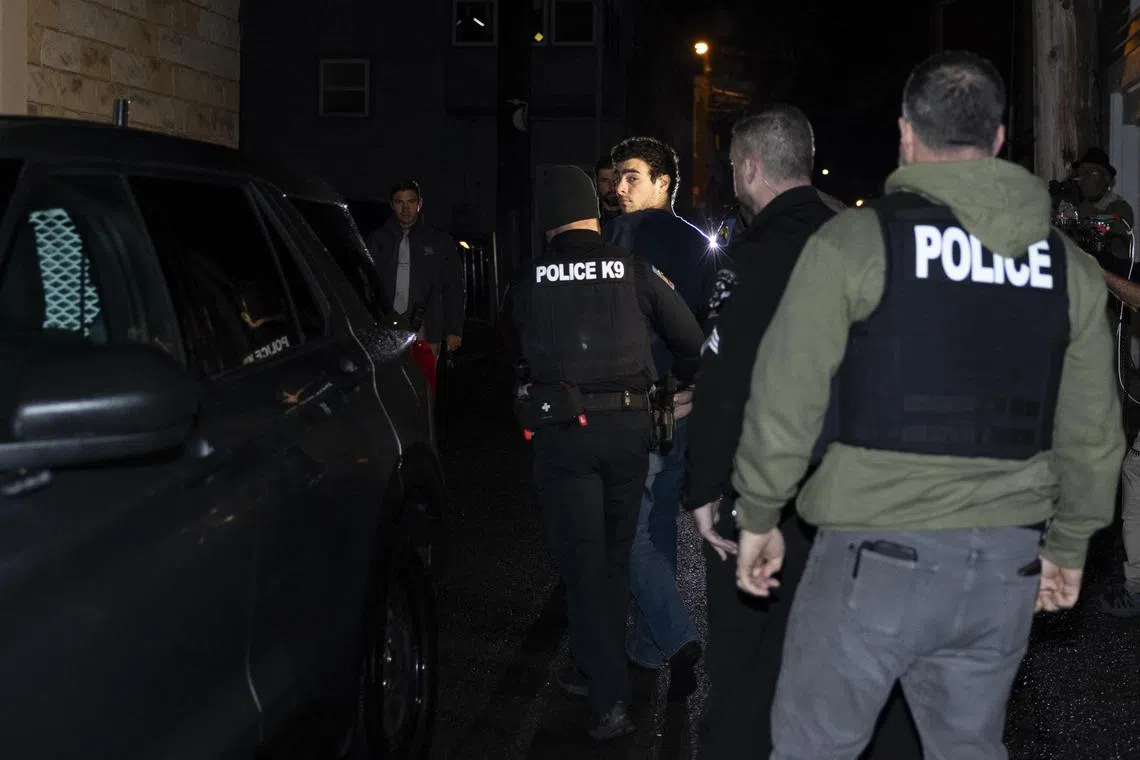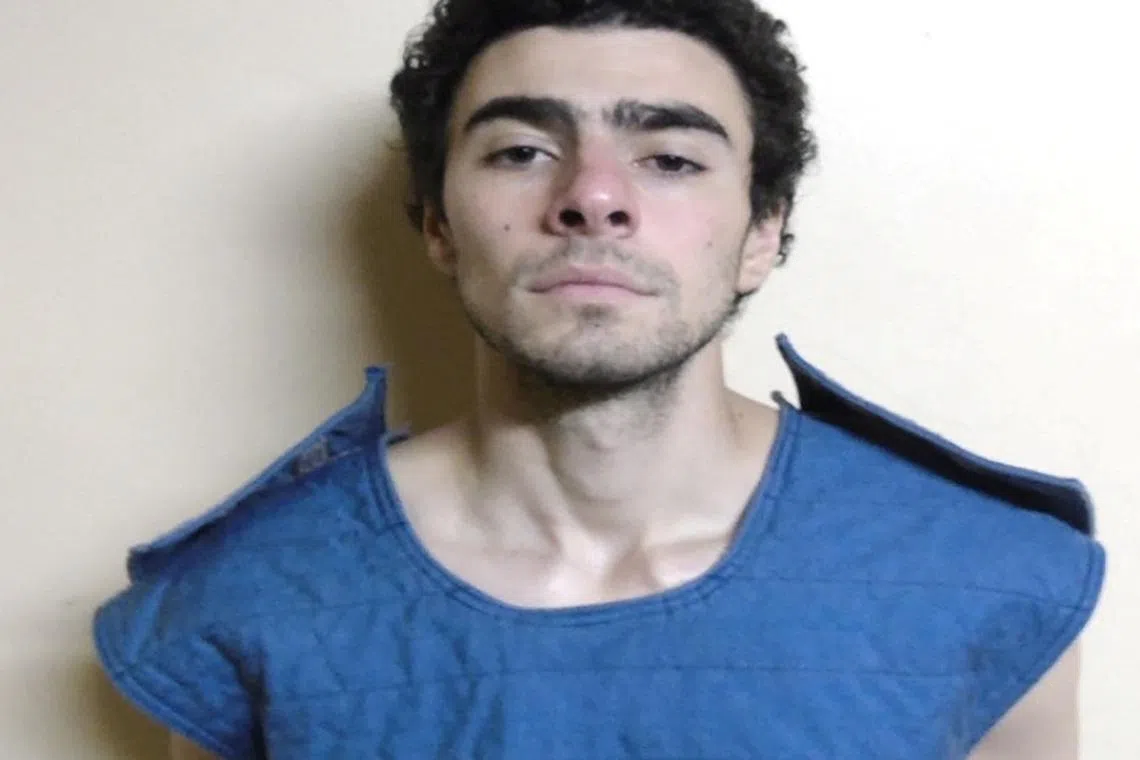Lowered balaclava in flirtatious moment: Unmasked UnitedHealth shooting suspect images key to arrest
Sign up now: Get ST's newsletters delivered to your inbox

The UnitedHealth executive shooting suspect Luigi Mangione arriving at a courthouse in Pennsylvania, the US, on Dec 9.
PHOTO: NYTIMES
Follow topic:
NEW YORK – In the end, the big break turned out to be a pair of images at a New York hostel.
The New York police scoured hundreds of hours of video searching for clues to the identity of the person who shot UnitedHealth executive Brian Thompson in a brazen killing outside a Manhattan hotel last week, but released only two images to the public that showed the suspect’s face.
In every other photograph captured from video – of the suspect pedalling away on a bike, standing at a coffee shop counter, riding in a taxi – the man’s face was obscured by a mask and hood.
But the two crucial images, released the day after the shooting, were captured when the suspect lowered his balaclava at the request of a hostel desk clerk in a flirtatious moment to see his face, according to media reports.
They are taken from above, and while he is still wearing a hood, his face can be clearly seen in the pair of pictures. In one, he is smiling, in the other he appears straight-faced.
On Dec 9, the suspect, identified as Luigi Mangione, 26, was captured in Altoona, Pennsylvania, after he was spotted eating at McDonald’s by an employee of the fast-food restaurant who thought he resembled the gunman from images.

The UnitedHealth executive shooting suspect Luigi Mangione was captured in Pennsylvania on Dec 9 after he was spotted eating at McDonald’s.
PHOTO: REUTERS
“This picture was obtained by the NYPD during one of their extensive video canvasses,” NYPD or New York Police Department chief of detectives Joseph Kenny said at a press conference.
“Hundreds of tips began to pour into our hotline. Each tip was investigated thoroughly, and we began to release additional photographs as they came into our possession,” he said.
Advanced surveillance
New York has one of the most advanced surveillance systems of any major US city, largely built after the Sept 11, 2001, attacks, according to Mr Felipe Rodriguez, a former NYPD detective sergeant and now an adjunct professor at the John Jay College of Criminal Justice in New York.
The number of cameras in New York is in the thousands, and all camera feeds can be monitored in real time, as well as reviewed for previous footage, aided by facial-recognition software.
Mangione appears to have been well aware of the extensive camera network, and seemingly took steps to shield his identity before, during and after the attack. The first images released by the police came from footage of the shooting on Dec 4, with the suspect shown wearing a dark-colored hoodie and a backpack.
Other footage showed him running from the scene and then riding a bike into Central Park. Over the weekend, police released a picture of the suspect inside a taxi. In all of them, he was masked.
Meanwhile, the police searched for the backpack – eventually finding it in Central Park – tested evidence for DNA, pored over tips from the public and, eventually, said they no longer believed he was in New York City.
“For just over five days, our NYPD investigators combed through thousands of hours of video, followed up on hundreds of tips and processed every bit of forensic evidence, DNA, fingerprints, IP addresses and so much more to tighten the net,” New York Police Commissioner Jessica Tisch said at Dec 9’s press conference.
But the case turned on a fast-food worker more than 320km outside the city recognising the face of a customer.
“In this case, (where) it really came down to technology was the use of drones in Central Park and it really comes down to the video canvass that we did,” NYPD’s Mr Kenny said.
“We used every source of video that we could collect, hundreds and hundreds and hundreds of hours from hundreds of sources, and that helped bring this to where we are right now.” REUTERS

